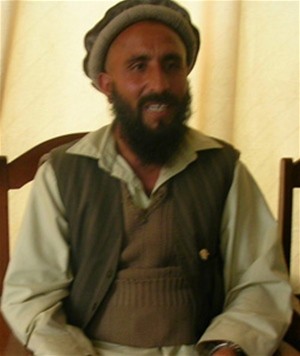
Muhammad Sarwar, a farmer who benefited from USAID-supported training.
USAID/Afghanistan
Farmers benefit from the revival of horticultural markets
“I feel I was lucky to be a part of USAID’s training on crop sorting, grading, packaging, and transportation. I am sure my business will be further safeguarded following guidelines on managing and assembling products to be transported to the market,” said Muhammad Sarwar, a training participant.
13 APRIL 2006 | JALALABAD, NANGARHAR PROVINCE
“I feel I was lucky to be a part of USAID’s training on crop sorting, grading, packaging, and transportation. I am sure my business will be further safeguarded following guidelines on managing and assembling products to be transported to the market,” said Muhammad Sarwar, a training participant.
Eastern Afghanistan was once legendary for its production of quality fruits and vegetables. However, nearly three decades of conflict and several years of drought have had a negative impact on farming. As a result, local knowledge about farming methods and links to the region’s major markets declined. USAID responded with an effort to revitalize the agricultural sector by providing intensive training to farmers and building links between farmers and regional produce markets.
In partnership with USAID, Nangarhar University’s agriculture department provided “train-the-trainer” courses for 40 Afghan government officials and 576 farmers selected by their own communities. Following the training, these farmers delivered six half-day training sessions on crop production techniques — including pest and disease control, harvest, post-harvest, and grading practices — to farming communities throughout the region. The program also taught farmers about fertilizers and improved varieties of vegetable seeds.
With the new skills and knowledge gained, local farmers are cultivating higher quality produce and increasing their crop yields. To ensure that farmers are tapping into the region’s produce markets, USAID is linking local farm markets with produce assemblers and wholesalers at the district level. The program has already linked 93,000 farmers to regional markets.
By training farmers in better cultivation techniques while increasing demand for their crops through market development, USAID is helping increase the profitability of agriculture-based activities. Now, the region can start rebuilding a vibrant, profitable agriculture market for a new generation of farmers and wholesalers.







Comment
Make a general inquiry or suggest an improvement.